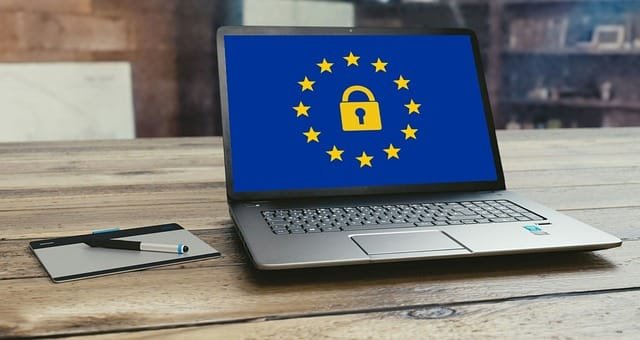In the digital world, personalized marketing is no longer a nice-to-have; it’s essential. Customers expect tailored recommendations, targeted ads, and relevant content that meets their specific needs. But with growing concerns over data privacy, companies are walking a fine line. People want personalization, but they also want control over their personal information.
This balance between delivering personalized experiences and respecting privacy isn’t just a legal requirement; it’s a matter of trust. Customers want to feel confident that you value their privacy as much as you value their business. In this guide, we’ll explore actionable steps for creating a personalized marketing strategy that respects privacy compliance, builds customer trust, and still delivers the tailored experiences your audience expects.
Understanding the Intersection of Personalization and Privacy
Personalized marketing uses customer data to create relevant and tailored experiences, but it also brings privacy into focus. Regulations like the General Data Protection Regulation (GDPR) in Europe and the California Consumer Privacy Act (CCPA) in the United States enforce strict guidelines on how businesses handle personal data. This creates a challenge: how do you leverage data for personalization without crossing the line into invasive or non-compliant territory?
Balancing personalization with privacy involves a few core principles:
- Transparency: Be clear with customers about what data you collect and why.
- Consent: Obtain explicit permission before collecting or using personal data.
- Data Minimization: Only collect data that is absolutely necessary for personalization.
- Security: Ensure that customer data is stored securely and access is controlled.
Keeping these principles in mind, let’s dive into how you can create a compliant and effective personalized marketing strategy.
Step 1: Prioritize Transparency from the Start
Transparency is foundational for building trust with customers, especially when it comes to using their data for personalization. When customers understand why and how you’re using their information, they’re more likely to feel comfortable with personalization efforts.
Clearly Explain Your Data Collection Practices
Every time you collect data, make it clear to users what you’re collecting, why you need it, and how it will benefit them. For example, if you’re asking customers to fill out a profile for tailored recommendations, explain that this information will be used to deliver more relevant content or product suggestions.
For instance, include a short message next to the sign-up form saying, “We use your preferences to recommend products you’ll love. Your data is secure and won’t be shared.” Clear, honest explanations go a long way in helping customers feel comfortable sharing their information.
Use Simple Language in Your Privacy Policies
Your privacy policy should be easy to understand. Avoid complicated legal jargon and focus on simple language that describes your data practices. A customer who understands how you’re using their data is less likely to feel uncomfortable about personalization.
For example, instead of saying, “We collect PII to enhance UX,” say, “We collect information like your name and preferences to personalize your shopping experience.” This small adjustment in wording makes a big difference in terms of clarity and trust.
Step 2: Obtain Explicit Consent for Data Collection and Usage

Consent is a key part of privacy compliance. Personalized marketing can only be effective when customers feel they’re in control of their own data. Explicit consent means customers understand what they’re agreeing to and have the option to opt in—or out.
Use Opt-In Forms for Data Collection
Instead of assuming consent, let customers actively opt into data collection for personalization. For example, if you want to send personalized email offers, include a checkbox with a clear message like, “Yes, I’d like to receive personalized offers based on my preferences.” This gives customers a choice and makes your intent clear.
When running a targeted campaign, like a holiday sale, you might want to track user behavior on your site. Present a pop-up notification that explains the purpose and allows users to opt-in or out. Giving customers control over their data choices is essential for both compliance and customer satisfaction.
Offer Granular Consent Options
For more in-depth personalization, consider providing granular consent options. This means allowing customers to choose specific types of data they’re comfortable sharing. For instance, some users may be happy to share browsing data but not location data.
Let’s say you’re running an e-commerce site. In your user profile settings, you could include checkboxes for different types of data usage, such as “Personalized Product Recommendations,” “Location-Based Deals,” and “Browsing History-Based Ads.” By letting customers customize their preferences, you demonstrate respect for their privacy.
Step 3: Practice Data Minimization to Reduce Risk
Data minimization is the principle of collecting only the information you truly need. By limiting data collection, you minimize privacy risks and reduce the chances of handling sensitive information improperly.
Identify Essential Data for Personalization
Before launching a personalized campaign, identify the minimum data you need to achieve your goal. For instance, if you’re running a targeted email campaign, focus on collecting information like customer preferences and purchase history instead of detailed demographic data that may not be necessary.
For example, an email campaign might only require a customer’s name and shopping preferences to deliver personalized product recommendations. There’s no need to collect unnecessary data like birthdates unless it’s specifically relevant to your campaign. This practice not only reduces risk but also respects customer privacy.
Reevaluate Data Collection Needs Regularly
The data you need today may not be relevant tomorrow. Make it a regular practice to review and assess your data collection processes. Eliminate any data points that no longer serve a purpose in your personalization strategy.
For instance, if you previously collected customer addresses for a direct mail campaign but now rely on email, stop collecting addresses to reduce privacy risks. Regularly revisiting your data collection needs ensures you’re staying compliant and minimizing unnecessary data retention.
Step 4: Use Anonymization and Pseudonymization for Personalization

Anonymization and pseudonymization are methods of protecting customer data while still allowing for meaningful personalization. Anonymization removes identifying information altogether, while pseudonymization replaces it with a unique identifier.
Anonymize Data for Aggregate Insights
When analyzing data to understand trends, anonymization helps protect individual privacy. For example, if you’re analyzing customer purchase behavior to determine which products are popular, anonymize data points so that they can’t be traced back to specific individuals.
By anonymizing data, you can still gain valuable insights without compromising individual privacy. For instance, you could report on trends like “40% of users prefer eco-friendly products” without linking that preference to any specific customer.
Use Pseudonymization for Tailored Marketing
Pseudonymization replaces personally identifiable information (PII) with pseudonyms or unique codes, allowing you to personalize experiences without storing sensitive information. This approach is especially useful for email marketing or website personalization.
For instance, assign each customer a unique ID instead of using their actual name when tailoring website content based on browsing history. Pseudonymization allows you to create a personalized experience without storing and handling sensitive personal data directly.
Step 5: Build Data Security into Your Personalization Process
Personalized marketing inherently involves using customer data, so data security is essential. Protecting data at every stage not only keeps you compliant but also builds customer trust in your personalization efforts.
Implement Strong Access Controls
Not every team member needs access to customer data. Restrict data access to only those who need it for their roles. For example, your data analysts may need access to anonymized customer data, but not the full CRM system with all personal details.
By limiting access, you reduce the risk of accidental leaks or misuse. Regularly review and update access privileges to ensure that sensitive information is always handled securely.
Encrypt Sensitive Data
Encryption is essential for protecting data during transfer and storage. Encrypting customer information means that even if unauthorized access occurs, the data is unreadable without the decryption key.
For instance, encrypt customer emails and payment information used in personalized campaigns to prevent unauthorized access. Encryption protects data at every touchpoint, from collection to storage, reinforcing customer trust in your brand’s commitment to privacy.

Related: Check out our free tools:

Step 6: Regularly Refresh and Reconfirm Permissions
Permissions granted today don’t last forever, and customer preferences may change over time. Regularly refreshing consent and confirming permissions ensures that customers are still comfortable with the data they’ve shared.
Implement Consent Renewal for Long-Term Campaigns
For long-term campaigns or ongoing data usage, consider renewing consent annually or at specific intervals. Send a quick message to customers explaining that you’re confirming their data preferences and giving them the option to adjust settings or opt out if they choose.
For instance, if you’ve been sending personalized offers based on shopping habits, send an email every six months or annually to check if they’d like to continue receiving these recommendations. This practice respects customers’ changing preferences and keeps your database up-to-date with active permissions.
Reconfirm Permissions After Major Privacy Policy Changes
If you update your privacy policy or make significant changes to data handling, notify customers and reconfirm their consent. Transparency in policy changes builds trust and ensures compliance with legal standards.
For example, if you start using new data analytics tools for personalized campaigns, notify customers and let them opt in or out based on the new terms. This proactive approach respects their rights and keeps your practices transparent.
Step 7: Foster a Privacy-First Culture Across Your Organization

Creating a privacy-first culture means that every team member understands the importance of protecting customer data and respects privacy in every interaction. This foundation is key to balancing personalization with compliance effectively.
Provide Regular Privacy Training for All Teams
Privacy compliance isn’t just the job of the legal team—it involves everyone. Regular privacy training sessions help all employees understand the importance of data protection and best practices for compliance.
For instance, train marketing teams on how to create personalized campaigns that respect privacy, and teach IT teams about secure data storage practices. When everyone in the organization is aligned with privacy principles, compliance becomes a natural part of your company culture.
Encourage Cross-Departmental Collaboration
Privacy compliance often requires input from various departments, including legal, IT, and marketing. Encourage collaboration across departments to ensure that everyone is on the same page regarding data use, storage, and protection.
For example, involve your legal and IT teams early in the planning stages of a new personalized marketing campaign. Legal can provide compliance guidelines, and IT can implement security measures, ensuring that all aspects of the campaign respect privacy from the start.
Step 8: Leverage Privacy as a Marketing Asset
Showing customers that you respect their privacy can be a powerful part of your brand message. Today’s consumers are aware of data privacy issues and may prefer brands that prioritize their privacy. Emphasize your commitment to privacy in your messaging.
Highlight Your Privacy Practices in Customer Communications
Use your website, email newsletters, and social media channels to communicate your privacy practices. This transparency not only builds trust but also differentiates your brand from competitors who may not prioritize privacy as highly.
For instance, create a “Privacy Promise” section on your website that explains how you protect customer data and comply with privacy regulations. This initiative shows customers that privacy isn’t an afterthought but a core part of your brand values.
Use Compliance as a Trust-Building Tool
Achieving certifications or adhering to specific privacy standards (like GDPR compliance) can become part of your brand’s trust-building strategy. Displaying compliance badges on your site or mentioning certifications in customer emails reassures customers that their data is in good hands.
For example, if you’re GDPR-compliant, include a simple note in your email footer, such as, “We value your privacy and comply with GDPR standards.” These subtle reminders reinforce your commitment to privacy.
Step 9: Continuously Monitor and Adapt to Evolving Privacy Regulations

Privacy laws and regulations are continually evolving, with new requirements and standards emerging across the globe. To stay compliant and maintain customer trust, it’s essential to keep up with these changes and adapt your personalized marketing strategies as necessary.
Regularly Review Global Privacy Laws
Different regions have different privacy laws, and it’s crucial to stay informed about these regulations, especially if you operate internationally. Key regulations include the General Data Protection Regulation (GDPR) in the European Union, the California Consumer Privacy Act (CCPA) in the United States, and the Personal Information Protection and Electronic Documents Act (PIPEDA) in Canada. Regularly review these and any new laws to ensure your practices align with current standards.
For example, if a new law introduces stricter rules on data retention, review your data storage practices to ensure compliance. Partnering with legal advisors or consulting privacy experts can be valuable for keeping up-to-date and understanding how changes affect your marketing efforts.
Update Data Practices Promptly to Meet New Requirements
When regulations change, act quickly to adjust your data practices. For instance, if a new law requires faster customer data deletion, implement automation tools that handle this process efficiently. Ensuring your company adapts to regulatory changes promptly shows your commitment to protecting customer privacy.
For example, if a new law requires users to be able to view or delete their data more easily, update your platform with user-friendly features that facilitate these actions. This responsiveness builds trust and positions your brand as proactive and respectful of evolving privacy standards.
Step 10: Foster Customer Engagement by Encouraging Data Control
Giving customers control over their own data is a powerful way to build trust and encourage long-term engagement. When customers feel empowered to manage their data preferences, they’re more likely to stay engaged and view your brand as trustworthy.
Implement Self-Service Data Control Options
Self-service options allow customers to manage their data preferences and update their permissions easily. Include a user-friendly privacy settings dashboard on your website or app where customers can control the type of personalized content they receive or opt out of certain data-sharing practices.
For instance, provide options for customers to select what types of marketing communications they prefer—such as product recommendations, sale alerts, or newsletter updates—and give them the freedom to adjust these preferences as they wish. Self-service tools let customers feel in control, making them more comfortable engaging with your personalized content.
Regularly Remind Customers of Their Data Control Options
Remind customers periodically about their data control options, whether through emails, notifications, or messages on their account dashboard. This not only increases awareness but also empowers them to update their preferences, enhancing their experience and building trust.
For example, send a quarterly email that says, “You’re in control! Update your data preferences anytime to ensure you’re getting the content that matters most to you.” Such reminders reinforce your commitment to privacy and transparency, making customers feel valued and respected.
Step 11: Embrace Privacy-Enhancing Technologies (PETs)
Privacy-Enhancing Technologies (PETs) are tools designed to maximize privacy while still allowing companies to gather and analyze data effectively. These technologies allow you to provide personalized experiences without compromising customer privacy.
Use Differential Privacy for Data Analysis
Differential privacy is a technique that allows you to analyze trends in customer data without identifying individuals. It adds statistical “noise” to datasets, protecting individual privacy while still allowing meaningful insights. This is particularly useful for companies analyzing large amounts of data to inform marketing decisions.
For instance, use differential privacy to analyze purchasing trends without exposing individual buying habits. This way, you can refine your marketing strategy without compromising the privacy of any single customer.
Explore Federated Learning for Machine Learning Models
Federated learning is a privacy-friendly machine learning method that trains models across decentralized devices or servers, allowing data to remain on users’ devices rather than in a centralized database. This technique enables you to develop personalized experiences without actually collecting or storing customer data centrally.
For example, if you’re creating a recommendation engine, federated learning can help personalize suggestions based on each user’s device interactions while keeping their data private and secure. This approach respects customer privacy and allows you to personalize effectively without centralizing sensitive data.
Step 12: Regularly Measure the Impact of Your Privacy Practices on Customer Trust
Your approach to privacy should be an integral part of your customer experience strategy, and it’s essential to measure how it impacts customer trust and engagement. By tracking metrics related to privacy, you can assess the effectiveness of your practices and adjust as necessary to keep building trust.
Use Customer Satisfaction Surveys to Gauge Trust
Customer satisfaction surveys can include specific questions about how comfortable customers feel with your data practices. Ask for feedback on the transparency of your data collection, ease of managing data preferences, and the value they get from personalized experiences.
For instance, include questions like, “How comfortable are you with how we use your data for personalized recommendations?” or “Do you feel you have control over your data preferences?” These insights help you understand how well you’re balancing personalization and privacy from the customer’s perspective.
Track Metrics Like Opt-In Rates and Unsubscribe Requests
Opt-in rates, unsubscribe rates, and data permission adjustments can provide insight into how customers feel about your data practices. For example, high opt-in rates might indicate trust in your personalization approach, while high unsubscribe rates might signal discomfort with your privacy practices.
If you notice that many customers are unsubscribing from personalized emails, analyze the reasons—perhaps by offering an option for customers to provide feedback during the unsubscribe process. Understanding these metrics helps you identify areas for improvement in your privacy and personalization strategy.
Conclusion: Building a Personalized Marketing Strategy That Respects Privacy
Balancing personalized marketing with privacy compliance isn’t easy, but it’s essential for building a trustworthy, customer-centric brand. By being transparent, seeking explicit consent, minimizing data collection, implementing robust security measures, and fostering a privacy-first culture, you can create a personalized experience that respects each customer’s privacy and complies with legal standards.
Today’s customers value their privacy and expect brands to take data protection seriously. When you approach personalization thoughtfully and prioritize privacy at every stage, you don’t just meet regulatory requirements—you build a foundation of trust that strengthens customer relationships. This balanced approach makes your marketing efforts not only effective but also sustainable, positioning your brand as a responsible leader in today’s data-driven world.
READ NEXT:
- Are Vanity Metrics Killing Your Marketing Efficiency? Here’s What to Track Instead
- Pinpointing Digital Marketing ROI: Why Your Metrics Aren’t Telling the Full Story
- Unlocking Real ROI in Digital Marketing: The Hidden Costs Draining Your Budget
- How Misaligned Marketing Funnels Are Blocking Your ROI Potential
- Best Digital Marketing Agency In Santa Ana, California
- Best Digital Marketing Agency In San Francisco, California




















